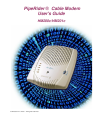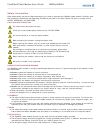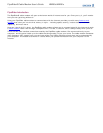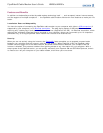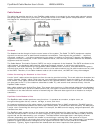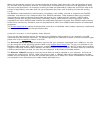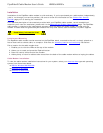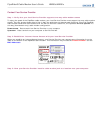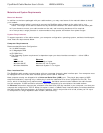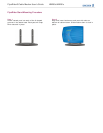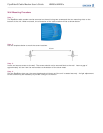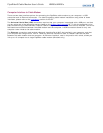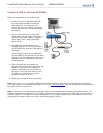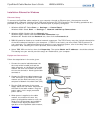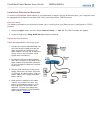
When the downstream channel has a higher bandwidth allocation (faster data rate) than the upstream channel,
this is known as an asymmetric scheme. This asymmetry is consistent with current Internet applications, which
also tend to be asymmetric. For example, browsing the web and downloading videos and sound files require the
transfer of significantly more data than the typical upstream activities, such as clicking on links and sending
e-mail.
The PipeRider enhanced security cable modem is available in two models, one that is compliant with DOCSIS
standards, and another that is compliant with Euro-DOCSIS standards. These standards define the interface
requirements for cable modems providing data distribution over a cable television network. DOCSIS cable
modems operate with the same connectivity technology used by cable television service providers, and are
compatible with other DOCSIS cable modems and associated equipment. Likewise, Euro-DOCSIS cable modems
follow similar connectivity standards, and are compatible with other Euro-DOCSIS cable modems and associated
equipment.
The Product Specifications table provides detailed information on PipeRider cable modem frequencies, bandwidths,
interfaces, and additional technical specification data.
Computer Interface to the PipeRider Cable Modem
There are two data-interface options for connecting the PipeRider cable modem to your computer: the USB
connection and the Ethernet connection. For details regarding the installation of either of these connection types,
please refer to the Installation section of this CD.
The Universal Serial Bus (USB) connection requires that your computer is equipped with a USB port, and that
you are using one of the operating systems listed in the System Requirements list. To link your computer to the
PipeRider cable modem with a USB connection, a specific USB driver (provided on this CD) must first be installed.
This driver facilitates communication between the cable modem and the computer. Unlike an Ethernet connection,
a USB connection does not allow for more than one computer to be linked to the cable modem.
The Ethernet 10BaseT connection requires that an Ethernet card be installed in your computer, and that the
computer be configured for TCP/IP. When this option is used, a 10BaseT cable carries data between the cable
modem and your computer. An Ethernet interface also allows you to add a hub, which is needed when more than
one computer will be connected to the cable modem (Windows only).



